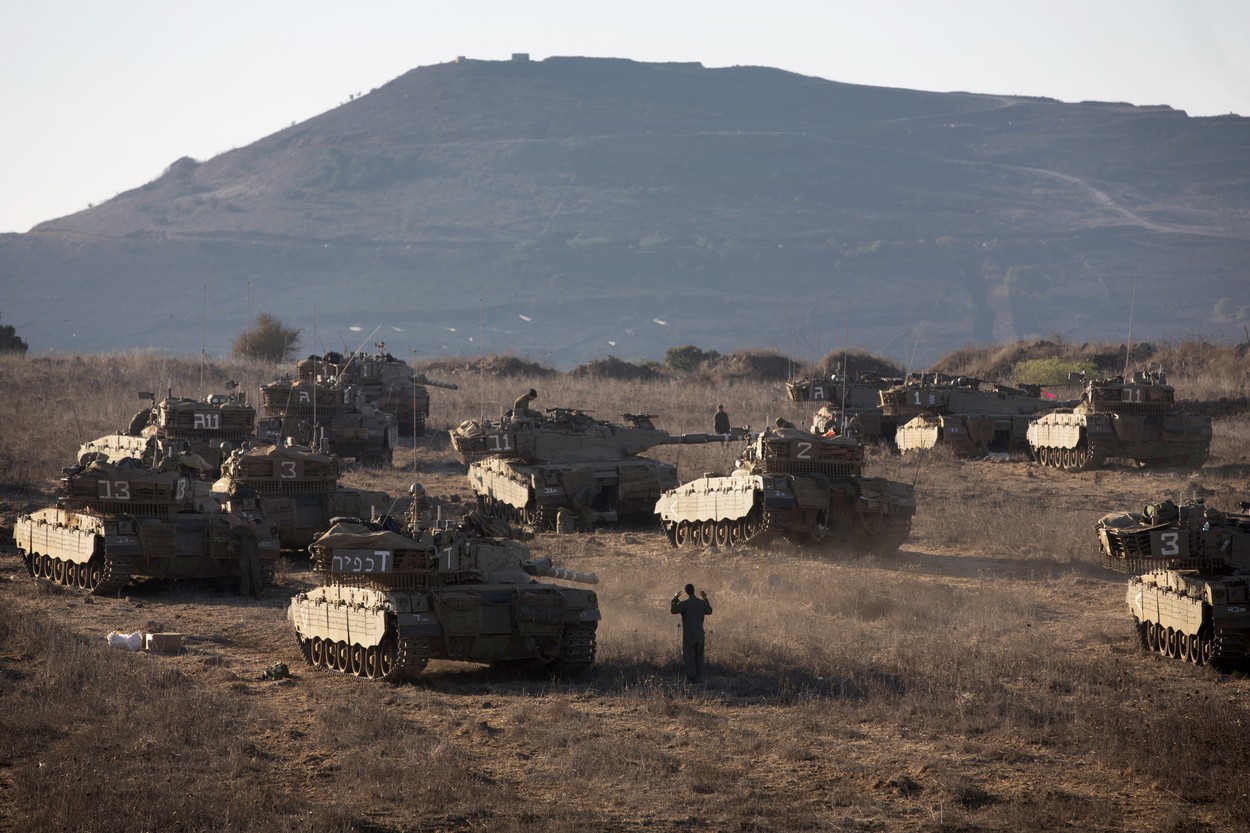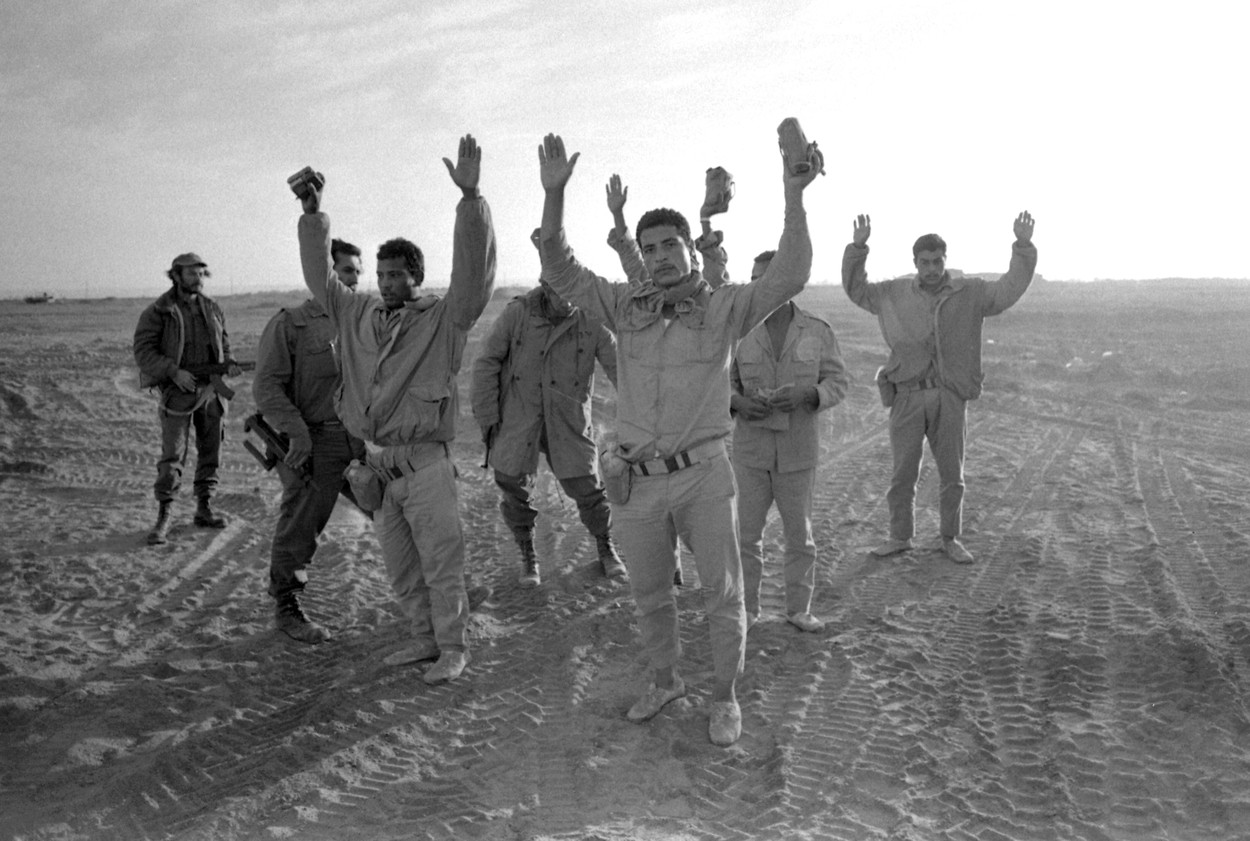
The Yom Kippur War, or the October War, as it was also called, was the peak of the escalation of the Arab-Israeli conflict after previous confrontations between the two sides in 1948, 1956 and, above all, the resounding victory of Israel. in 1967.
Perhaps the fact that the Israelis were resting on their laurels in the 6-Day War was the reason why the Mossad did not inform the leaders of the State of Israel of the impending Arab invasion, even though they had clear signals about it. This conflict was very close to developing into a world one. It also became an ideal opportunity for the two superpowers, the USA and the USSR, to test their military equipment.
The Yom Kippur War, or the October War, as it was also called, was the peak of the escalation of the Arab-Israeli conflict after previous confrontations between the two sides in 1948, 1956 and, above all, the resounding victory of Israel in 1967. .
The war also inspired HBO’s hit series Valley of Tears (2020), directed by Yaron Silberman and Kate Jopson.
The Yom Kippur War – historical context and causes
After the lightning victory of 1967, Israel occupied the Sinai Peninsula up to the Suez Canal, as well as the strategically important Golan Heights. In just a few days, Israel occupied a territory almost four times larger than at the beginning of the war. We are dealing with a defeated, but above all humiliated Arab world. They were defeated by a state whose existence they refused to recognize.
In 1970, Anwar Sadat became the president. He was the Minister of Defense during the 6-Day War and holds himself directly responsible for the failures his country has suffered.
It should be noted that there is a mood of dissatisfaction in Egypt, public opinion demands revenge for 1967. There are numerous meetings between President Sadat and Hafez al-Assad, the ruler of Syria, another local government defeated by Israel in 1967.
On the other hand, Israel, after the victory in 1967, would build a line of fortifications, which they considered impregnable, on the east bank of the Suez Canal, called the Bar-Lev Line. The Israeli special services constantly monitored the movements of the Arabs, but were deceived by the fact that the Egyptians, like the Syrians, constantly conducted mobilization exercises.
Fearing an imminent attack, Israel spent a year ago to move troops into the Sinai Peninsula, an attack that never happened. All this was part of the Arab strategy to lull Israel’s vigilance.
The Israeli army relied on flexible defensive tactics, with armored divisions positioned several kilometers from the Bar Lev line to block enemy troops that managed to pass through the fortifications.
Israeli leaders were extremely proud of the fortifications of the Bar-Lev line, on the construction of which they spent huge sums of money.
Warning ignored
A day before the start of the Arab attack, the Israeli ambassador in London receives information from a spy that the Arab countries are preparing an imminent attack. In turn, he will urgently inform his superiors.
The information came from a reliable source in the immediate circle of Egyptian President Sadat. The identity of this informant is still unknown, he is known only by the code name “The Source”.
This news caused outrage among Israeli leaders. There is an emergency meeting of the government led by Prime Minister Golda Meir, but there are doubts about the authenticity of the information.

Merkava tanks in the Golan Heights Photo: Menahem KAHANA / AFP / Profimedia
Israeli leaders were aware that sooner or later an Arab attack would occur, but they believed that they had not yet received from the USSR the modern weapons they expected.
Thus, the necessary training was not carried out, and the reservists were not mobilized. This wrong decision will have consequences that could lead to the disappearance of the state of Israel from the map.
Operation “Badr” and the beginning of the attack
Operation Badr is the Egyptian army’s plan to cross the Suez Canal. The crossing was carried out on inflatable boats in the morning of October 6, tens of thousands of soldiers reached the eastern shore almost without a fight. The name chosen for this operation had historical significance for the Arabs, being the site of the Prophet Muhammad’s victorious battle against a tribe near Mecca in the 7th century.
It should be noted that at this moment all of Israel was practically paralyzed, celebrating Yom Kippur, the holiest Jewish holiday, the day of judgment, on which, according to tradition, forgiveness for committed sins is sought. The few Israeli soldiers defending the Bar Lev line were taken by surprise, most of them killed or captured.
At the same time, according to the agreement, Syrian forces will attack the Golan Heights with a significant tank force, forcing Israel to fight on two fronts.
The Israeli air force tried to repeat the success of 1967 by attacking Arab bases, but this time the air defenses of Egypt were equipped with modern batteries of Soviet manufacture. This aspect led to significant losses of Israeli aviation.
At the same time, with the help of pontoons and drawbridges, the Egyptians manage to ferry their tank units to the west bank, strengthening their military presence in Sinai. Israeli tanks in the area of the Bar-Lev line counterattacked, but the operation ended in serious failure, suffering significant losses.
Egyptian anti-tank units were equipped with Soviet-made surface-to-surface anti-aircraft missiles, which caused carnage in the ranks of Israeli armored vehicles.

Egyptian soldiers surrender Photo: Axel Springer jun./SVEN SIMON / DPA / Profimedia
The mobilization of Israeli reservists, or how a few hours changed the situation
Before the war, Arab intelligence predicted that the Israeli army would need at least 20 hours to mobilize its reservists. The Israelis managed to do it in less than 15 hours, which completely disrupted the Arabs’ plans.
In addition, immediately after crossing the Suez, the Egyptian forces halted instead of continuing the advance to the strategic Sinai passes, which were now inaccessible.
On the Syrian front, things were similar: after initial successes, Syrian armored columns stopped to regroup, giving the Israelis the respite they needed to bring their troops into the area.
As for the equipment of the two fighters, the Arab troops used the Soviet T-54 and T-55 tanks, as well as the modern T-62 at the time.
As for the Israelis, they benefited from the excellent Centurion models of British origin, but especially from the modern Magach, an Israeli adaptation of the American M48 and M60 Patton series. It should also be noted that these days the USA sent a huge amount of materials and weapons to Israel.
Despite a significant numerical advantage, Israeli tanks will seize the initiative in the area of the Golan Heights, which was later called the “Weeping Valley”.
Thanks to the excellent characteristics of the tanks they have (armor, longer range), as well as the excellent training of the crews, the Israeli divisions manage to repulse the Syrians, causing them significant losses.
In a short time, Israeli units will cross the border with Syria, advancing towards Damascus, taking advantage of the disorganized retreat of the Syrian forces. They will stop 30 kilometers from the Syrian capital. This happened because the Arab countries, especially Iraq, rushed to help Syria by sending contingents of troops. The Israelis were also waiting for peace talks to begin and wanted them to be conducted from a position of strength.
On the Sinai front, things will also improve significantly for the Israelis. In a daring maneuver, they manage to move troops across the west bank of the Suez Canal, isolating most of the Egyptian forces in the Sinai.
Only the intervention of the US saved the surrounded Egyptian army from destruction, American diplomacy tried to distance Egypt from the Soviet Union and bring it closer to the US with this diplomatic offensive. Something they managed to do.
Peace talks begin, which the Egyptians were forced to agree to due to international pressure and also because, since the entire army was surrounded in the Sinai, they needed Israel’s consent to send supplies. After negotiations, it effectively returns to the status quo before the war.
Consequences of the October War
After the 1973 conflict, Israel will maintain its position as a major power in the region. At the same time, Arab honor was restored after the disgrace of 1967. Protest demonstrations later took place in Israel, and Meir’s government came under increasing criticism.
At the same time, it was the first time when an Arab state – Egypt – negotiated with Israel, thus indirectly recognizing its existence. Tensions in the Middle East will continue until now.
Strictly speaking in terms of numbers, the Arab losses were seven to eight times greater than the Israeli losses. Israel withstood a concerted attack from the Arab world, responding vigorously and showing extraordinary unity.
At the same time, the actions of the Arab countries showed that they did not accept the disastrous result of 1967, when Egypt later managed to return its Sinai Peninsula.
In 1979, Israel and Egypt signed a peace treaty, according to which the Israeli side undertook to permanently withdraw from the Sinai (despite the fact that large reserves of crude oil were recently found in the area). Israel’s withdrawal from this territory took place in several stages, ending in 1982. Withdrawal included the demolition of several illegal Jewish settlements, including the town of Yamit.
Literature:
- Avraham Rabinovitch – The Doomsday War: The Epic Encounter That Changed the Middle East
- Trevor Dupuy – Elusive Victory: The Arab-Israeli Wars, 1947-1974
- Shlomo Gazit, Chaim Herzog – The Arab-Israeli Wars: War and Peace in the Middle East
- Abdel Ghani – The October War
Source: Hot News
Ashley Bailey is a talented author and journalist known for her writing on trending topics. Currently working at 247 news reel, she brings readers fresh perspectives on current issues. With her well-researched and thought-provoking articles, she captures the zeitgeist and stays ahead of the latest trends. Ashley’s writing is a must-read for anyone interested in staying up-to-date with the latest developments.